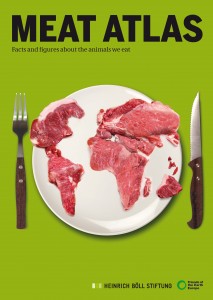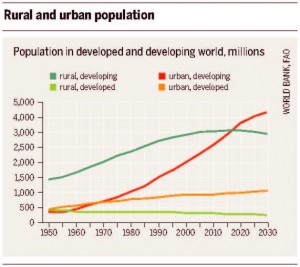Hold the Dairy, and the Meat Too
Jan 12th, 2014 | By admin | Category: Food and Hunger/AgricultureBy Suzanne York, www.howmany.org
Overconsumption, as most people are aware of, is having a tremendous effect on the planet. But fewer think of this in terms of diet, where intensive meat and dairy production is also a strain on the environment.
A new report – Meat Atlas – has just been published by Friends of the Earth Europe and the Heinrich Boell Foundation that calls for a rethink of how most of global society produces and consumes meat and dairy products.
This is a big issue to take on in today’s world. And the report addresses some topics that some people simply don’t want to acknowledge – resource shortages (especially water), globalization, population growth, as well as overconsumption.
It is not an advocacy piece for becoming vegetarian or living off the grid. Rather, it simply lays out the facts and impacts of eating meat in a world of over 7 billion people with a rising middle class in developing countries that is making meat part of the daily diet
Below are two issues – water and urbanization – that the Meat Atlas analyzes and questions whether or not the world should continue with business as usual.
Water
Consumption of fresh water has increased eightfold over the past century and it continues to increase at more than double the rate of human population growth. Worldwide agriculture consumes 70% of available freshwater, one third of which goes towards raising livestock. To produce a kilo of beef requires 15,500 liters of water – the same amount required to produce 12 kilos of wheat or 118 kilos of carrots. To make a hamburger requires more than 3.5 square meters of land.
The authors’ note that “Human population growth alone means we have to find ways to use water more economically, because the same amount of water will have to go around for more people.”
Moreover, they question whether we should continue to pump an ever scarcer resource into the raising of livestock. By 2025, over half of humanity will live in areas experiencing water stress.
Population and Urbanization
Both population growth and rising urbanization lead to more meat consumption. Urban dwellers, which tend to have greater disposable incomes, tend to consume more animal products.
In 2011, rural Chinese citizens consumed 26.1 kilograms of meat, milk and eggs; their urban counterparts ate 48.9 kilograms.
By 2050, more than 70% of the world’s population will live in cities. As noted above, more and more mainly urban people are reaching middle class status. By 2030, the middle class will more than double in size, from 2 billion today to 4.9 billion. Of this, Asia will comprise 64% of the global middle class and account for over 40% of global middle-class consumption.
Supporting Alternatives
The Meat Atlas emphasizes that there are alternatives to the industrial agribusiness model of consumption. The authors also recognize that urban and small-scale rural agriculture and livestock can make a big contribution to poverty reduction, gender equality and a healthy diet in both developing and developed countries.
Small changes can make a difference, and that goes not only for people, but business and governments too.


